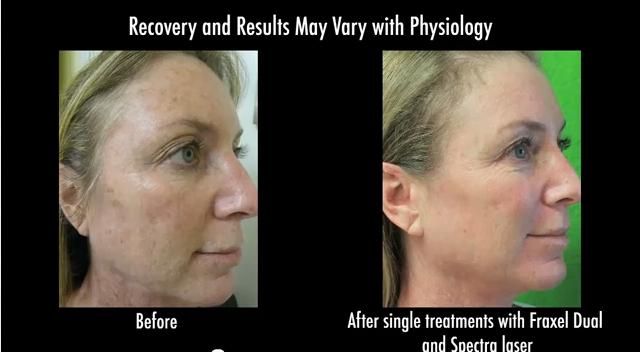SKIN CLINIC TIPS TO AVOID SUN-DAMAGED SKIN AND AGE SPOTS
Spending time in the sun at the beach or mountain is pleasurable, but FineTouch Dermatology skin clinic warns that the sun’s ultraviolet (UV) rays can be damaging to your skin. You need to be proactive about avoiding sun-damaged skin, even after summer is over. Dr. Umar and our skin clinic reveal that excessive sun exposure can contribute to sun spots, age spots, fine lines and wrinkles, uneven skin tone, broken blood vessels, as well as increasing your risk for skin cancer.
It doesn’t even take excessive, ongoing sun exposure to damage skin. A recent study in the journal JAMA Dermatology, shows that low levels of ultraviolet A1 sun exposure can cause damage after just two days. In order to protect your skin, Fine Touch Dermatology skin clinic urges you to be smart about sun protection — even in autumn.
PROTECTION FROM SUN DAMAGE AND TREATMENT FOR AGE SPOTS
Age spots are usually harmless but prevention is suggested to limit their appearance, as well as age spot treatment with skin-bleaching treatments or laser skin rejuvenation. Limiting sun exposure, avoiding tanning beds and using sunscreen are three of the best options that Dr. U and our skin clinic recommends.
While doing activities outside, make sure to moderate and limit sun exposure. You should always wear sunscreen, sunglasses, a hat and protective clothing when possible. Take periodic breaks in the shade and use a shade device.
Apply SPF 30+ sunscreen that is broad spectrum UVA/UVB daily to the face and sun-exposed areas of the body exposed to sun. It should also be water or sweat resistant for 40 to 80 minutes and contains zinc oxide or titanium dioxide. Sunscreen should be applied every two hours when in direct sunlight, while swimming or due to excessive sweating. Using a sunscreen every day, despite weather conditions, and a moisturizer to protect skin from further sun damage. The combo also allows skin to naturally heal and acts as an age spot treatment.
LASER SKIN REJUVENATION OPTIONS FOR SUN-DAMAGED SKIN
Dr. U and our skin clinic can inform you about various sun-damage and age spot treatment options, including light treatments, laser skin rejuvenation, dermal fillers and pharmaceutical injectables.
Age spots may result when melanocytes within the epidermis produce melanin. For age spot treatment, pigment needs to be broken down with the melanocyte cells addressed. Both topical solutions and laser skin rejuvenation treatments alleviate the appearance of age spots.
Skin bleaching products with hydroquinone is one of the most common treatments to address uneven skin tones. Hydroquinone inhibits tyronsinase, an enzyme that controls melanin production. Application treatment is typically ongoing.
Laser skin rejuvenation treatments with either Fraxel lasers or Lutronic’s Spectra effectively eliminate age spots by breaking up melanin and destroying melanocytes.
The Fraxel re:fine works on minor pigmentation issue with a 1,927 nm wavelength, while the Fraxel DUAL features both the 1,927 nm wavelength and 1,550 nm wavelength laser options for moderate to severe pigmentation issues.
Spectra is a dual-pulsed, Q-switched Nd: YAG laser that offers four wavelength modes — 532, 585, 650 and 1064 nm— for laser skin treatment to address an array of skin issues. Spectra is used as an effective laser skin rejuvenation treatment for pigment issues and non-ablative laser resurfacing. All three lasers assist with large pores, dull skin tone, skin texture, wrinkles, age spots, pigmented lesions, melasma, rosacea and photodamage.
If you are currently suffering from sun-damaged skin and age spots, schedule a free consultation with Dr. U.

